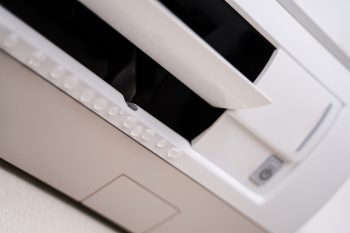
Washing machines have become an integral part of our lives, providing us with clean clothes at the touch of a button. But, did you know that adjusting the water temperature on your washing machine can significantly affect the cleanliness of your clothes, their longevity, and your energy consumption? In this comprehensive guide, we’ll explore how to adjust the water temperature on your washing machine, the benefits it brings, and the potential problems you might encounter.
Adjusting the water temperature on a washing machine involves checking the clothing labels for recommended washing temperatures, selecting the appropriate cycle on your machine, and adjusting the temperature manually. If your machine automatically selects a temperature based on the cycle, you may need to override this setting following the instructions in your machine’s manual. Always refer to your machine’s user manual for specific instructions.
Why Adjust Water Temperature?
Adjusting the water temperature on your washing machine has several benefits. First, it can lead to significant energy efficiency and cost savings. According to the Energy Saving Trust, washing at 30°C can save 57% on running costs compared to washing at 40°C.
Second, adjusting the water temperature can help your clothes last longer. Cold water is less damaging to most fabric fibers than hot water, reducing the risk of shrinking clothes and fading colors. Conversely, washing in hot water results in thermal disinfection, ensuring that bacteria and other microorganisms are eliminated.
How Water Temperature Affects Washing
The water temperature plays a crucial role in the washing process and the condition of clothes. For instance, hot water (130°F or 54°C and above) is most effective in removing dirt and stains, suitable for linens, white clothing, and heavily soiled items. Warm water (between 90°F and 110°F or 32°C and 43°C) is a safe bet for most clothing items. It can effectively clean clothes without damaging them. On the other hand, cold water (between 60°F and 80°F or 16°C and 27°C) is the best choice for delicate fabrics and dark colors that may fade or run.
Adjusting Water Temperature: A Step-by-Step Guide
Here’s a step-by-step guide on how to adjust your washing machine’s water temperature:
- Check the clothing labels: Always read the labels on your clothes to determine the recommended washing temperature for each fabric type.
- Select the appropriate cycle: Some washing machines automatically select a water temperature based on the cycle setting, while others require manual temperature adjustment. Choose the cycle that corresponds to the type of fabric you are washing.
- Adjust the temperature manually: Set the temperature according to the fabric type and the level of cleanliness required.
- Override the automatic temperature setting: If your washing machine automatically selects a water temperature based on the cycle setting and you want to use a different temperature, follow the instructions in your machine’s manual to override the setting.
Safety Precautions
When adjusting the water temperature on a washing machine, it’s crucial to take some safety precautions. Always check the care labels on garments and follow the manufacturer’s recommendations for water temperature. Overloading the washing machine can cause clothes not to rinse properly and may affect the water temperature. Make sure to load your machine according to the manufacturer’s recommendations.
Brand-Specific Temperature Settings
Different washing machine brands may have slightly different temperature settings, but most of them follow a general range for hot, warm, and cold water settings. Always refer to your washing machine’s user manual for specific instructions on adjusting the water temperature.
Troubleshooting Temperature Issues
If you encounter issues when adjusting the water temperature, such as inconsistent water temperatures, fluctuating water pressure, or faulty valves, it’s important to address these promptly. Check your water heater’s shut-off valve, replace malfunctioning valves, and consult a professional if needed.
In conclusion, adjusting the water temperature on your washing machine can lead to cleaner clothes, longer-lasting garments, and significant energy savings. Always remember to check the clothing labels, select the appropriate cycle, and adjust the temperature manually to get the best results. Happy washing!
Frequently Asked Questions
What happens if I continuously wash my clothes in hot water?
Continuously washing your clothes in hot water can lead to premature wear and tear. It can cause fading of colors, shrinkage, and damage to delicate fabrics. Therefore, it’s recommended to use hot water sparingly and only for certain types of clothing or heavily soiled items.
Can I mix different fabric types in one wash cycle?
It’s not recommended to mix different fabric types in one wash cycle as they may require different water temperatures. For instance, delicate fabrics need a cold wash, while cottons can withstand a hot wash. Mixing fabrics can result in damage to the more delicate items.
How can I know if my washing machine’s water temperature is accurate?
If you suspect that your washing machine’s water temperature is not accurate, you can check it using a thermometer. Simply run a cycle without clothes and measure the water temperature during the cycle. If the temperature is significantly different from what your machine is set to, you may need to consult a professional to check the machine.
Is there any harm in always washing clothes in cold water?
While washing clothes in cold water can help preserve fabric and color, it may not always effectively clean heavily soiled items or kill bacteria. Therefore, it’s important to adjust the water temperature based on the type of fabric and the level of cleanliness required.
What should I do if my washing machine doesn’t have a temperature setting?
If your washing machine doesn’t have a temperature setting, it likely defaults to a standard temperature. In this case, you can control the temperature by choosing different cycles. For instance, a ‘delicate’ or ‘cold’ cycle will use cold water, while a ‘heavy-duty’ or ‘whites’ cycle will use hot water. Always refer to your machine’s manual for specific instructions.












